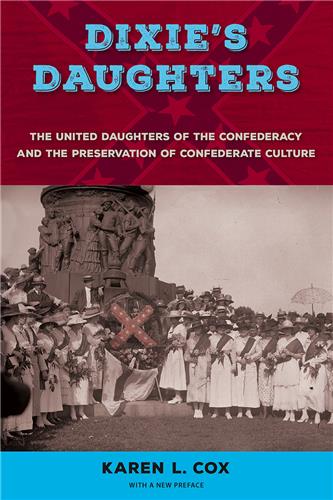Search Results for 'carolyn morrow long'
798 results for 'carolyn morrow long'
Please note that while you may order forthcoming books at any time, they will not be available for shipment until shortly before publication date
Chef Bert Gill will inspire readers to connect deeply with their region and communities by relying on seasonal food from local farmers--and to try some of his inventive dishes at home.
Even without the right to vote, members of the United Daughters of the Confederacy proved to have enormous social and political influence throughout the South--all in the name of preserving Confederate culture. Karen L. Cox's history of the UDC, an organization founded in 1894 to vindicate the Confederate generation and honor the Lost Cause, shows why myths surrounding the Confederacy continue to endure.
In this book, Meredith Reifschneider synthesizes archaeological research on healthcare and medicine to show how practices in the United States have evolved since the nineteenth century, demonstrating that historical archaeology can provide important insights into healthcare and modes of self-care in the past.
Nineteenth-century Spanish American writers reimagined gender roles, modernization, and national identity during Spanish America’s uneven transition toward modernity. This ambitious volume surveys an expansive and diverse range of countries across the nineteenth-century Spanish-colonized Americas, showing how both men and women used the discourses of modernity to envision the place of women at all levels of social and even political life in the modern, utopian nation.
Marianne Preger-Simon’s story opens amid the explosion of artistic creativity that followed World War II. While immersed in the vibrant arts scene of postwar Paris during a college year abroad, Preger-Simon was so struck by Merce Cunningham’s unconventional dance style that she joined his classes in New York. She soon became an important member of his brand new dance troupe—and a constant friend.
A much-needed synthesis of the rapidly expanding archaeological work that has taken place in the Moundville region over the past two decades, this volume presents the results of multifaceted research and new excavations.
The contributors to Broadcasting Modernism argue that radio led to changes in textual and generic forms.











